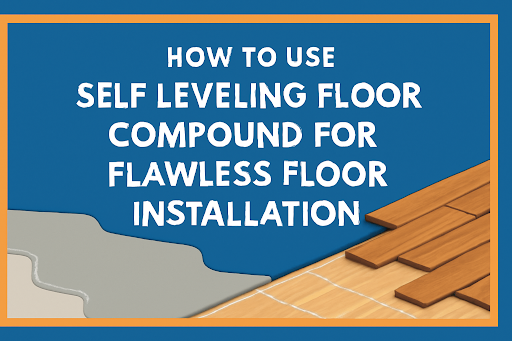Different Types of Tile Trim and How to Choose One. Tile trim, also known as edge trim, is a finishing strip used to cover the exposed edges of tiled surfaces. The primary function of tile trim is to provide a neat and professional finish to tiled surfaces by covering the exposed edges, which can otherwise look unfinished or uneven.
Tile trim is a crucial component in any tiling project. These decorative and functional elements are designed to provide a finished edge to tiled surfaces, making them more durable and visually appealing. There is a variety of tile trim available on the market, each serving a specific purpose.
Understanding the different types of tile trim and their applications can help you choose the best trim for your tiling project. In this article, we will explore some of the most common types of tile trim. Whether you are a DIY enthusiast or a professional tiler, this guide will help you make an informed decision when selecting the appropriate tile trim for your project.
The Purpose of Using Tile Trim
Tile trim is an essential item that can be used to finish off a tiling job. It is used to provide a neat and professional look to the edges of tile and helps to cover up unsightly cuts or uneven edges that may result from cutting tiles to fit into corners or awkward spaces. The use of tile trim is not only aesthetically pleasing but also helps protect the tile from chipping, cracking, moisture, dirt, and other elements that could damage it over time. Moreover, tile trim is often used to create smooth and seamless transitions between different types of flooring, such as tile to wood or tile to laminate (see Figure 1).
Figure 1
With so many practical and aesthetic benefits, it is easy to see why using a tile trim is a crucial component in any tiling project.
Where Tile Trim Can be Used
Tile trim is commonly used in a variety of areas where tiled surfaces are installed including kitchens, bathrooms, outdoor areas, swimming pools, and commercial spaces. They are used in any area where a tiled surface needs a professional and polished finish, or where there is a need for a transition. Some common areas where tile trim may be used include:
- The edges of tiled backsplashes in kitchens and bathrooms
- Inner and outer corners of tiled walls
- Around windows or door frames
- Along the top and bottom edges of tiled walls
- Edges of tiled floors
- Transitions between different materials on walls and floors such as tile to wood
- Along the edges of stair treads
- At the edges of the shower niche and shower benches
- Around the perimeter of tiled shower floors or bathtub surrounds.
Different Types of Tile Trim
When it comes to tile, there are several types of trim that can be used to finish off the edges or corners of a tiled surface. There are many different types of tile trim available, each with its own unique benefits and uses. In this section, we will explore the different types of tile trim and discuss their various uses.
1. Tile Trim Edging Profiles
A tile trim edging profile is a kind of trim that can be used on edges, corners, and between the joints of two tiles. This trim includes one leg (or two legs depending on the model) that goes under the tile to be fixed into place. Since the leg goes under the tile, you should fit this trim before installing the tile. By providing a stable surface for the tile to rest against, the leg can help to prevent movement or shifting and cracking of the tile over time.
The primary function of a tile trim edging profile is to protect the edges of the tile from damage and to create a clean and professional-looking finish. Also, they are designed to provide a smooth, polished transition between the edge of the tile and the adjoining surface.
They are typically made of metal or plastic. Some profiles feature a polished or brushed metal finish, while others are painted or coated in a specific color or pattern to complement the surrounding decor. There are several types of tile trim edging profiles in various shapes and sizes to suit different tile purposes. Here are the most common profiles being used:
1. Straight Edge
This trim, also called a L-shaped trim, has a profile that forms a 90-degree angle, with one leg going under the tile and the other leg extending out to cover the edge of the tile. Straight-edge tile trim is usually used where tile edges are exposed in areas where the tile meets the walls, countertops, or other surfaces at a 90-degree angle (see Figure 2).
Figure 2
2. Square or Rectangular
A square or rectangular trim is a type of trim that has a straight, angular shape with 90-degree angles. This trim can be used at edges and corners and covers the edges of the tile (see Figure 3). The use of square or rectangular tile trim is particularly common in modern and contemporary design styles, where clean lines and sharp angles are emphasized.
Figure 3
3. Quadrant
A quadrant trim is used to create a smooth and rounded transition between tiled surfaces and adjacent surfaces, such as walls or floors. It has a curved shape that covers the exposed edge of the tile around bathtubs, shower enclosures, and countertops, as well as creates a clean edge around tiled floors and walls (see Figure 4).
Figure 4
4. T Shape
A T-shape trim allows the trim to be inserted into a gap between two tiles and covers the edges of those tiles. T-shaped tile trim is commonly used between tile joints and on the edges of a tiled wall or floor (see Figure 5). This tile trim is available in a variety of sizes and finishes and can be used with different types of tile, such as ceramic, porcelain, and natural stone.
Figure 5
5. Y Shape
A Y-shape trim features a central section that sits over the edge of the tile, with two wings that extend out at a slight angle to create a Y-shape. Y-shape trim is often used in areas where two tiled surfaces meet at a corner, such as in a shower enclosure (see Figure 6). It provides a clean and polished look to the tiled surface, while also protecting the edges of the tile from damage. It is available in a range of colors, making it easy to find a tile trim that matches the style and decor of the surrounding area.
Figure 6
6. Cove Shape
A cove shape trim is a type of trim that has a concave shape with a curved edge. It is often used to create a decorative transition between walls and floors. The cove shape creates a gentle curve that softens the transition between two surfaces, providing a more polished and elegant look (see Figure 7). It is available in a range of sizes and styles, from simple curves to more elaborate designs that incorporate multiple curves and angles.
One of the benefits of using cove shape trim profiles is that they can be used to conceal gaps or uneven joints between walls and floors. They can also help to reduce the amount of dust and dirt that accumulates in corners making them easier to clean.
Figure 7
7. Sloped Transition
A sloped transition trim is designed to create a gradual transition between two different types of flooring materials or floor surfaces with different levels. It typically has a wedge-shaped profile, which allows it to create a smooth, sloping surface that helps to prevent trip hazards as well as provides a finished appearance (see Figure 8).
In addition to its functional purpose, sloped transition trim profiles can also add a decorative element to a space, as it is available in a variety of finishes, and colors to complement the surrounding flooring and decor.
Figure 8
2. Bullnose Tile Trim
A bullnose tile trim is a type of tile trim that has a rounded edge that curves outward (convex) on one or more sides (see Figure 9). It can be made from various materials, including ceramic, porcelain, natural stone, and glass, and comes in a variety of sizes, colors, and textures to match the tile being used in the installation.
Figure 9
Bullnose tile trim is typically used to finish the edges of a tile backsplash, shower enclosure, or bathtub surround. It can also be used to create a border around a tile pattern or to frame a tile mural.
3. Quarter-Round Tile Trim
Quarter-round tile trim is similar to bullnose trim but features a curved profile that resembles a quarter of a circle. It comes in a variety of materials and is shaped like a quarter circle with a rounded outer edge and a flat back.
Quarter-round tile trim is commonly used in a variety of tile installations, including floors, walls, and countertops. It is particularly useful to finish the edges of tiled walls or floors when the tile has sharp edges or when the tile installation requires a smooth transition between the tile and other surfaces, such as walls or cabinets (see Figure 10).
Quarter-round tile trim is available in a variety of sizes, colors, and materials, so it is easy to find one that matches the style and color of your tile installation.
Figure 10
4. Cove Tile Trim
Cove tile trim, also known as cove trim or cove base, is a type of molding or edging that is designed to create a curved transition between the floor and the wall. It can also be used where the backsplash tile meets the countertop (see Figure 11).
Cove trim has a curved profile that provides a smooth transition between a horizontal and a vertical surface, creating a neat and tidy finish. It is usually made of material such as metal, PVC, or ceramic and comes in various colors and finishes to match the tile.
In addition to providing a clean finish, cove trim also serves a practical purpose. The curved profile of the trim prevents dirt and moisture from accumulating in the joint between the surfaces, which helps to prevent damage and maintain the integrity of the tiled surface.
Figure 11
5. Chair Rail Tile Trim
Chair rail tile trim is a decorative molding or edging that is installed horizontally on a wall, typically at a height of 30 to 36 inches above the floor (see Figure 12). It is named after its original use as a protective barrier to prevent chairs from damaging the wall.
Chair rail tile trim is commonly used in interior design to add visual interest and texture to a space. It can be made of various materials, such as wood, ceramic, stone, or metal, and comes in different colors, patterns, and finishes to complement the decor.
In addition to its decorative function, chair rail tile trim can also serve a practical purpose. It can help to break up a large expanse of wall, create a sense of proportion and balance, and protect the wall from damage caused by furniture or other objects.
Chair rail tile trim is often installed in dining rooms, living rooms, hallways, and other areas where there is a lot of foot traffic or where furniture is placed against the wall. It can be used alone or in combination with other decorative moldings, such as crown molding or baseboards, to create a cohesive look.
Figure 12
6. Listello Tile Trim
Listello tile trim is a decorative tile trim that is often used in areas such as bathrooms and kitchens as a decorative accent and can be installed as a border, a vertical accent, or a horizontal accent (see Figure 13).
Listello tile trim can add a distinctive and decorative touch to any tile installation and can be used to create a wide range of styles and effects, from traditional to contemporary. It can also be used to tie together different elements of a room’s design, such as coordinating with a wall color or complementing a countertop material. It can be found in different styles and materials including stone, ceramic, and metal.
Figure 13
7. V-Cap Tile Trim
V-cap tile trim is a type of finishing edge tile with a V-shaped profile used to give a polished and professional look to tiled corners.
V-cap tile trim is commonly used to finish the outer corners of tiled countertops, shower niches, and tiled steps or stairs (see Figure 14). It could also be used for the inner corners of tiled walls. The trim is available in various materials, such as metal, plastic, and natural stone, and in different colors and finishes to match the tile it is paired with.
Figure 14
8. Baseboard Tile Trim
Baseboard tile trim is commonly installed along the bottom of walls to cover the joint between the walls and floors and to provide a neat and finished appearance (see Figure 15).
In addition to providing a protective and decorative edge to tile installations, baseboard tile trim can also serve to cover up any irregularities or gaps in the tiling.
Figure 15
9. Pencil Liner Tile Trim
Pencil liner tile trim is typically a long, thin strip of tile that is about the width of a pencil, hence the name “pencil liner.” Pencil liner tile trim is usually made of ceramic or porcelain and is available in a variety of colors, textures, and finishes to match the tiles being used. It is commonly used in bathrooms and kitchens as a finishing touch to tile installations and can be used as borders or as decorative accents.
It can be installed horizontally, vertically, or diagonally to create a visually interesting pattern. Pencil liner tile trim can also be used as a transition between different types of surfaces (see Figure 16).
Figure 16
10. Flat Liner Tile Trim
Flat liner tile trim is a thin, flat strip of material similar to pencil trim. The main difference between these two trims is that the flat liner is designed to be installed flush with the surface of the tile. It can be used instead of pencil trim to give a more modern look to your tiled surface (see Figure 17).
Figure 17
Tile Trim Materials
Tile trim can be found in a variety of materials and you can choose the material depending on your design preferences, functional requirements, and budget.
- Metal trim: This is the most common type of tile trim used in bathrooms, kitchens, and other areas. It is made of aluminum, stainless steel, or brass and is available in a variety of finishes, such as chrome, brushed nickel, and bronze. Metal trim provides a clean, sleek finish to tile and helps protect the edges from damage.
- PVC trim: This trim is made of polyvinyl chloride (PVC), a synthetic plastic polymer. PVC trim is lightweight, durable, and resistant to moisture, making it ideal for use in bathrooms, kitchens, and other areas with high humidity. It is also available in various colors and finishes, making it a versatile option for many design styles.
- Ceramic trim: Ceramic trim is made of the same material as ceramic tile and is designed to match the color and texture of the tile it is paired with. This is a good option for people who prefer to install a trim made of the same material as the tile.
- Stone trim: Stone trim is made of natural stone materials such as marble, granite, or travertine. It provides a luxurious finish to tiled walls or floors and can add a rustic or organic feel to a space.
- Glass trim: Glass trim is made of transparent or opaque glass materials and is used to add a decorative element to tiled walls or floors. It can be used to create a contrast between different tile patterns or provide a colorful accent to a tiled surface.
- Wood trim: Wood trim is a great option for creating a warm and natural look. You can choose from a range of wood species and finishes, such as natural, stained, or painted, to match your decor.
How to Choose the Right Tile Trim for Your Tiling Project?
By now you have learned a lot about different types of trim. But the question still remains; how to choose the perfect trim for your tiling project? Choosing the right tile trim can be a crucial part of achieving a professional finish. With so many different styles of trim to choose from, it is important that you take the time to consider each one.
The first thing you need to do is determine the purpose of the trim. Is it to create a smooth transition between two different types of surfaces or to protect the edges of the tile from damage? Different types of trim are designed for different purposes, so knowing the purpose will help you choose the right type of trim.
Also, when selecting a tile trim, it is important to consider the color, finish, and material to ensure that it complements the installed tile and overall design of the space. Consider using a trim made from the same material as your tile to create a seamless look but if you are looking for a more modern look, metal trims are the way to go.
Finally, remember that the size of the trim should be proportionate to the size of the tile. A trim that is too large or too small can look out of place and detract from the overall look of the finished tile.
Conclusion
To sum up, tile trim plays an important role in achieving a polished and professional finish in any tiling project. From protecting the edges of tiles to enhancing their aesthetic appeal, there are various types of trim available to suit different needs and preferences.
Understanding the different types of tile trim and their functionalities can help you choose the best trim for your project. Whether you are tiling a kitchen backsplash, bathroom wall, or floor, using the appropriate tile trim will add that perfect finishing touch and ensure your project looks neat and polished. With so many options available, it is easy to find a tile trim that meets your specific needs and budget.
If you are planning a renovation project in Philadelphia, look no further than Matrix Company Solutions Corp. Our team of experienced professionals is dedicated to providing top-quality renovation services that will exceed your expectations. From kitchen and bathroom remodeling to flooring and painting, we offer a full range of renovation solutions to meet your needs. Contact us today to learn more about how we can help you transform your home with the help of our expert renovation services.





0 Comments